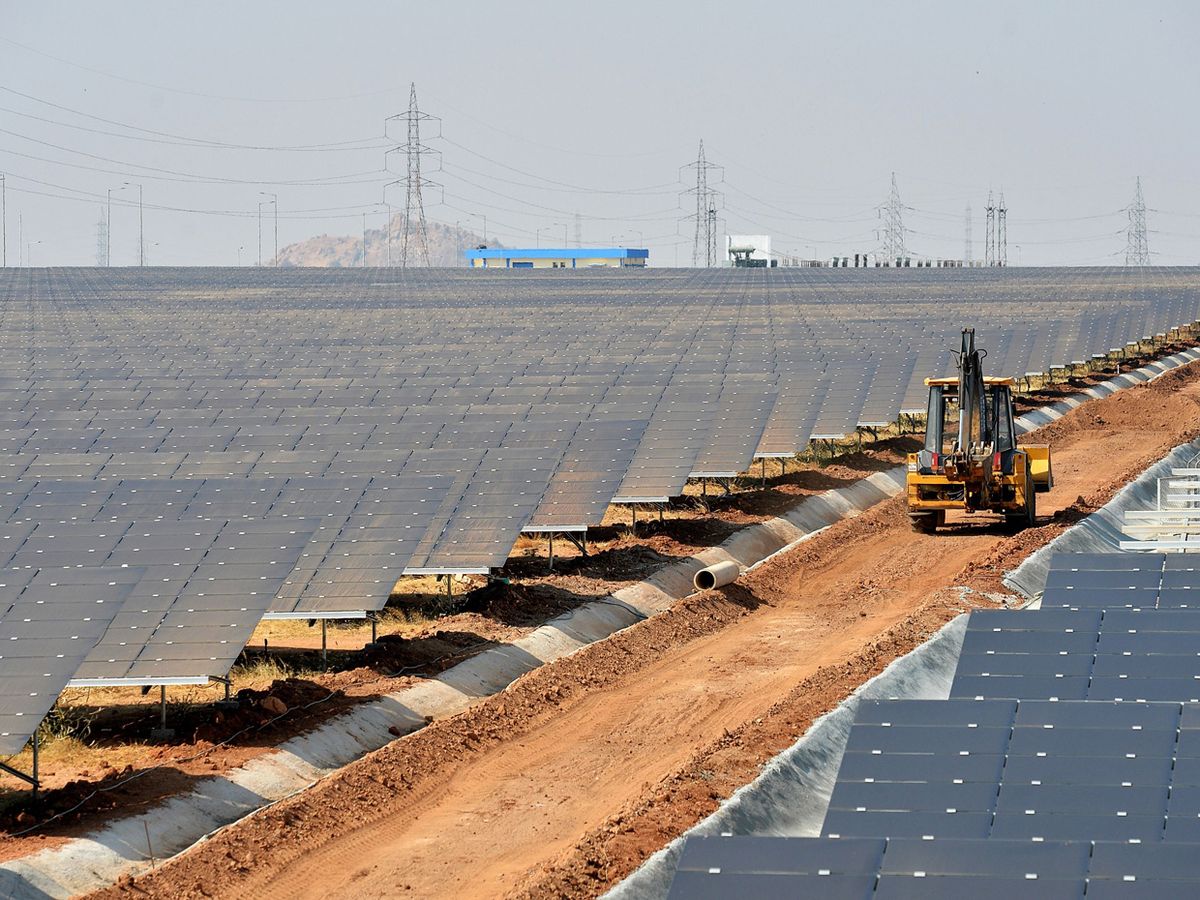It's 10 a.m. and Indian peanut farmer Venkeapream is relaxing at his family compound in Pavagada, an arid area north of Bangalore. The 67-year-old retired three years ago upon leasing his land to the Karnataka state government. That land is now part of a 53-square-kilometer area festooned with millions of solar panels. As his fields yield carbon-free electricity, Venkeapream pursues his passion full time: playing the electric harmonium, a portable reed organ.
With a capacity of 2 gigawatts and counting, Pavagada's arrays represent the world's largest cluster of photovoltaics. It's also one of the most successful examples of a solar “park," whereby governments provide multiple companies land and transmission—two big hurdles that slow solar development. Solar parks account for much of the 25.5 GW of solar capacity India has added in the last five years. The states of Rajasthan and Gujarat have, respectively, 2.25-GW and 5.29-GW solar parks under way, and Egypt's 1.8-GW installation is one of several new international projects.
Alas, even as they speed the growth of renewable energy, solar parks also concentrate some of solar energy's liabilities.
Sheshagiri Rao, an agricultural researcher and farmer based near Pavagada, says lease payments give peanut farmers such as Venkeapream a steadier income. But Rao says shepherds who held traditional rights to graze their fields were fenced out without compensation, and many have sold out. In Venkeapream's village, flocks once totaled 2,000 to 3,000 sheep. There are now only about 600 left.
The constant need to keep dust off the panels, meanwhile, has put more strain on already overtapped groundwater supplies. Local farmers bring water to clean the more than 400,000 panels at the Pavagada site of Indian energy developer Acme Cleantech Solutions. “At least 2 liters of water is required to clean one panel. This is huge," says B. Prabhakar, Acme's site manager. Robotic dusters allow Acme to clean just twice a month, but most operators lack such equipment.
Then there are the power surges and drops created as clouds pass over Pavagada—generation swings that must be countered with coal-fired and hydropower plants. Balancing renewable energy swings is a growing challenge for grid operators in Karnataka, which leads India in solar capacity and also has more than 4 GW of variable wind power.
Karnataka capped new solar parks at 0.2 GW after launching Pavagada. Analysts heralded the state's apparent shift toward distributed installations, such as rooftop solar systems, during a November 2019 meeting on sustainable energy in neighboring state Tamil Nadu. As Saptak Ghosh, who leads renewable energy programs at the Bangalore-based Center for Study of Science, Technology & Policy (CSTEP), put it: “Pavagada will be the end of big solar parks in Karnataka. Smaller is the future."
Just a few days later, though, news broke that Karnataka's renewable energy arm was acquiring land for three 2.5-GW solar megaparks. The state's move may reflect pressure from the national government to accelerate solar installations, as well as confidence that Pavagada's shortcomings can be fixed.
Instead of harming shepherds, for example, solar operators could open their gates. Grass and weeds growing amidst the panels pose a serious fire risk, according to Acme's Prabhakar. Increasingly, operators in other countries rely on sheep to keep vegetation down.
Higher-tech solutions may ultimately address Pavagada's water consumption and cloud-induced power swings. Israeli robotics firm Ecoppia is already providing what it calls “water free" cleaning at the Pavagada site operated by Fortum, a Finnish energy company.
Karnataka's solution for power swings at its new megaparks, meanwhile, is to plug the parks straight into the national grid's biggest power lines. The trio of plants are a joint project with the national-government-owned Solar Energy Corporation of India, and designed to export renewable electricity to other states. Power stations outside of Karnataka will balance the solar parks' generation, according to Ghosh's colleague, CSTEP senior research engineer and power-grid specialist Milind R.
India's government is eager to help, having promised to boost renewable capacity to 175 GW by March 2022 and to 450 GW by 2030. As Thomas Spencer, research fellow at the Energy and Resources Institute, a New Delhi–based nonprofit, noted at the November meeting in Tamil Nadu, India is “well off the track" for meeting either target.
This article appears in the February 2020 print issue as “India Grapples With Vast Solar Park."
Peter Fairley has been tracking energy technologies and their environmental implications globally for over two decades, charting engineering and policy innovations that could slash dependence on fossil fuels and the political forces fighting them. He has been a contributing editor with IEEE Spectrum since 2003.



